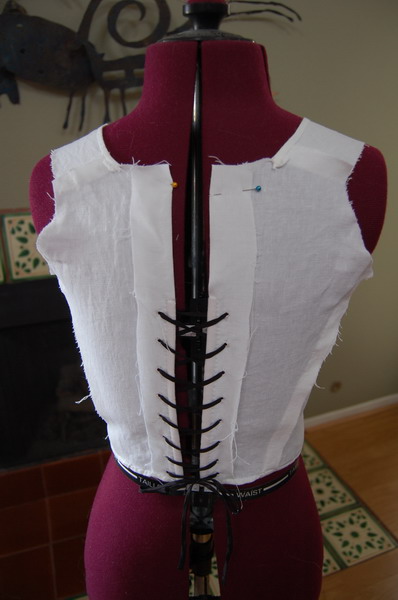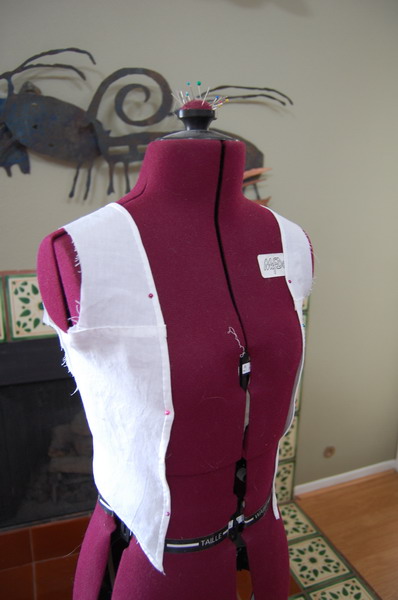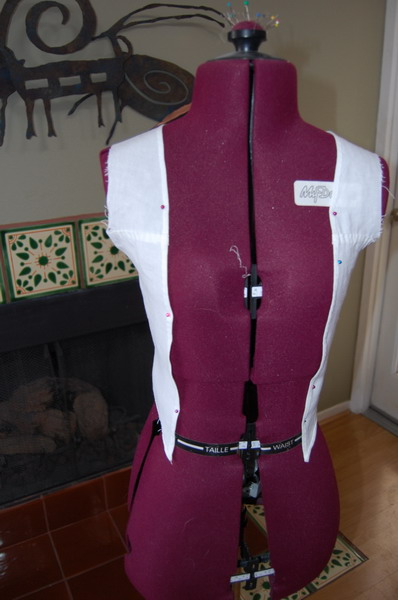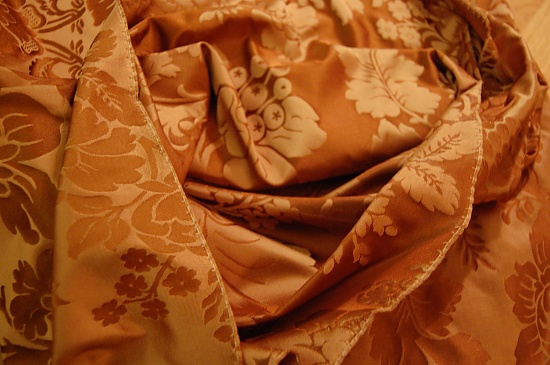A sacque backed dress is one of those dresses that just has to be draped. But, if you're like me and determined to do things by yourself (let's just say my first six years as the only historic costumer for probably five hundred miles shaped me a lot) or have to do things by yourself, it is possible to make one--even without a you shaped dressform.
These instructions will assume you're starting with a fitted lining. A well-fitted lining is possibly the best things ever when it comes to self costuming, as it can be adjusted to anything. The lining here is based on my stripey polonaise, which is an extremely different dress. To adjust it for this, I cut the back pieces as one and reshaped the front pieces so there'd be a gap for a stomacher.
One benefit of a fitted lining is you can have your dressform set to a somewhat you size, which is all I've ever been able to manage with it. Since my dressform has been wearing my 1850s aqua wool jacket for some time, I'm going to assume it is a somewhat me size at the moment! You could put your stays on it for a better fit. I haven't found that necessary myself, but I have very little figure to deal with, which does change things!
And here I present some very unimpressive pictures of the lining. I keep reminding myself that my striped pet-en-l'air looked almost exactly like this at one point! All except for the laced back.

Since I have fitted back on my pet-en-l'air, I wanted to try something new on this sacque. The gap at the top is so it'll fit in the shoulders and have a lacing gap. I didn't want to make lacing just to have it shut, which is what would've happened had I not adjusted my pattern.
It's based on the 1742-1752 dress in Costume in Detail. This dress also uses cross lacing.

The side view showing the darts. While I could get away without the darts with my figure, many dresses had them, and they do amuse me, so I made sure to include them.

And the front. I want this dress to have a fairly wide front opening, so made the front gap wide. One nice thing about this style--the robings don't have to match the front exactly. I expect to drape them a little past this edge. If necessary, a little linen can be added to back them.
Draping of the sacque to take place on Sunday! I have a sewing day planned with a friend. The front of the dress will be a shoulder to hem length of fabric. My main guide at the moment is Diagram XV for the 1740-1750 sacque in The Cut of Women's Clothes. I like the rather Victorian dart in the side that I think will make a waist dart unnecessary. Though if I need that--like I did with the pet-en-l'air--I'm fine with that too.
And what's a start-a-project post without a picture of the fabric?


That looks great! I'm working on a sacque now, so you'll make me inspired. I really need to learn more draping though. I still mostly Frankenpattern. :-)
ReplyDeleteI'm totally about Frankenpatterning! It works for me!
ReplyDeleteI get draping in theory, but I've never had an opportunity to try. And I've always been afraid of making things for others. It's no big thing if I mess up my own things, but it'd be awful to mess up someone else's. So, since I have no plans (or room) for a better fitting dressform, this is it for now :)
I just draped my sack-back the other night too! And I've actually decided to base the from of my dress off that 1742-52 one in Costume in Detail. :) Your fabric is so pretty, I'm sure this is going to be just stunning!
ReplyDeleteYay, a step-by-step sacque account !
ReplyDelete(And that fabric is yummy)
I'll watch this space VERY closely... I have a similar project in mind but some of my past draping experiments have been... interesting. And painful. And that fabric is yummy indeed!
ReplyDeleteRight. I’m a total beginner and am looking at the pattern thinking “what on earth is this?”. How do I even know which bits of the pattern to use? How do I know which parts are my size? The pocket hoops are done but how do I go about pattern for the lining?
ReplyDelete